The remarkable apricot jelly fungus is unlikely to be mistaken for anything else. With its rubbery texture, pink coloring, and tongue shape, it’s a thing of its own. Apricot jelly mushrooms (Guepinia helvelloides) are edible, though not commonly foraged due to their diminutive size and unremarkable flavor. In some countries, this wee species is known as the salmon salad fungus!

Jump to:
All About Apricot Jelly Fungi
The apricot jelly fungus is the only species in the genus Guepinia. It is an ear or tongue-shaped fungus with salmon pink coloring that grows from the ground. It is also commonly referred to as red jelly fungus.
Apricot jelly mushrooms are edible but rubbery without much of a flavor. They’re widespread across North America, being more common in the Midwest, PNW, and Northeast. They also occur in Europe, South America, and the Caribbean. The fungus was named in honor of Jean-Pierre Guépin, a French mycologist.
Synonyms for this species include Phlogiotis helvelloides and Tremiscus helvelloides.
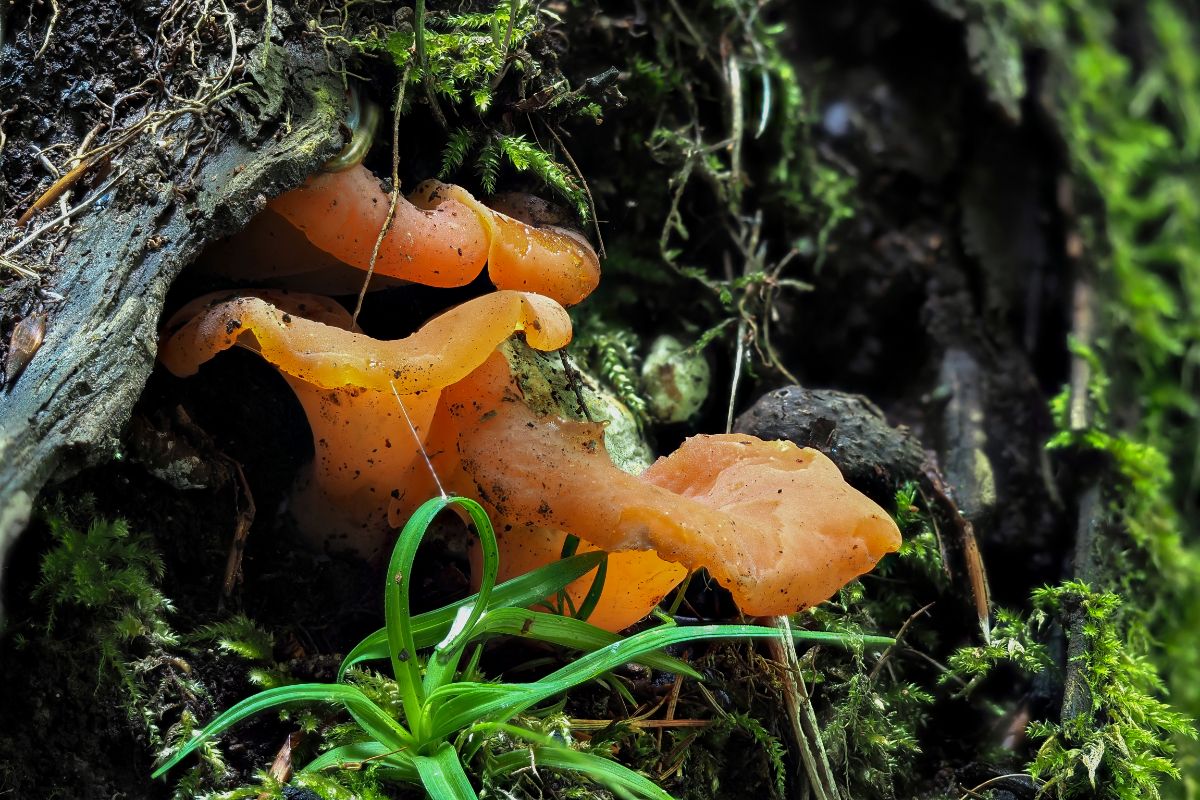
Apricot Jelly Fungus Identification
Season
Summer through fall and into winter in warmer regions.
Habitat
The apricot jelly fungus grows from well-rotted conifer wood. It often looks like it is growing from the soil, but invariably there is wood underground that it is attached to. It is a saprobic species, taking nutrients from rotting wood. The mushroom grows singularly or in small overlapping clumps.
This mushroom is most common in the northern regions, including the northeast states, the upper Midwest, and the pacific northwest. It is unknown or rare in the southern states and rocky mountain regions. This interactive map from Mushroom Observer is very helpful.
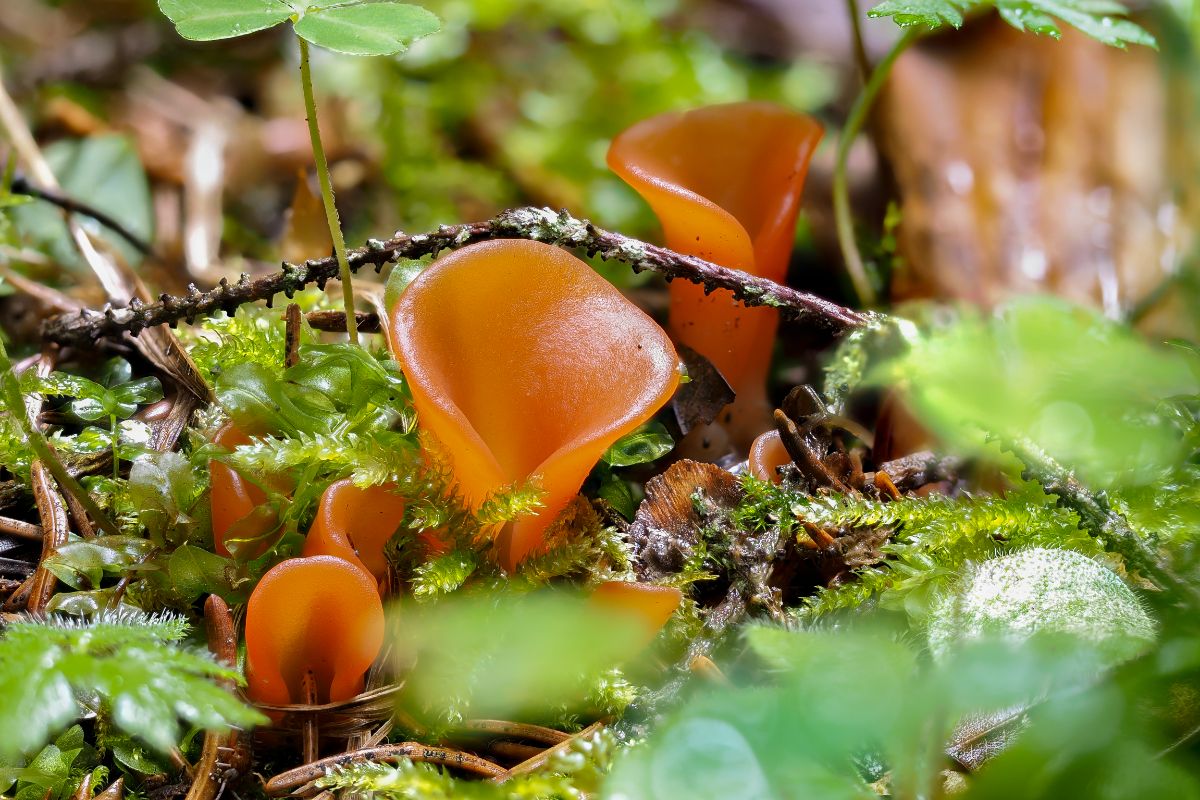
Identification
This unique-looking mushroom is salmon-pink, or orange to orange-pink, with a rubbery texture. There is no separate cap or stem, as they all merge together to create a rough funnel shape. Often, the body looks like a tongue or ear, depending on how much the body is spread out at its widest point.
The apricot jelly fungus is a small mushroom, growing up to 4 inches tall., but usually more like 2-3 inches tall. In youth, it is upright, inwardly curved, and usually has a slit down one side. The edges are often wavy, and the flesh is flexible and somewhat thick. As it matures, the body spreads out to almost flat and can take on various irregular wavy, or lobed forms. If fruiting bodies are growing in close proximity, they’ll overlap and influence the overall spread and shape of each other.
The inner surface is smooth without decorations, while the outer surface may be smooth or slightly wrinkled. Both inner and outer surfaces are the same color, or the inner color might be a bit lighter. It can look translucent or a bit transparent, depending on the thickness of the flesh and the depth of coloring.
The stem is short and stubby, central or slightly off-center, and whitish in color. It may be partially or entirely buried underground, reaching for the buried wood below.
This species does not have a distinctive scent or taste. The spore print is white.
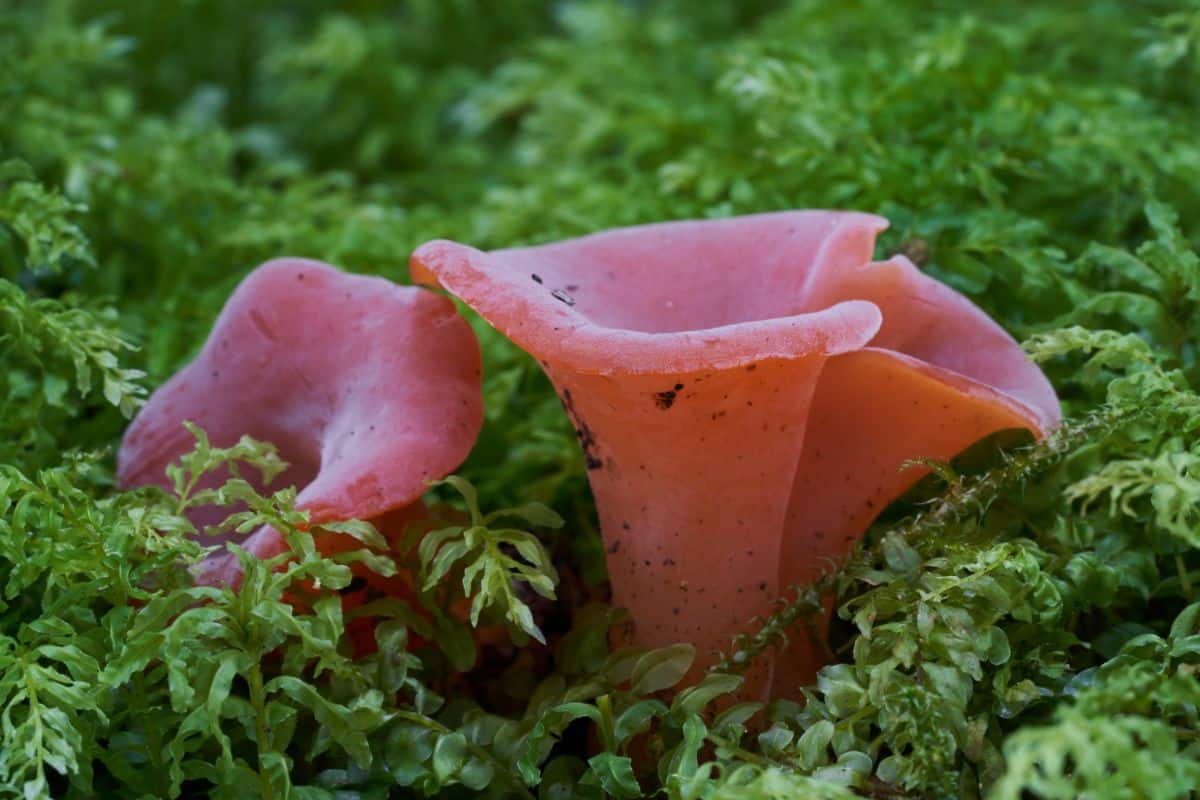
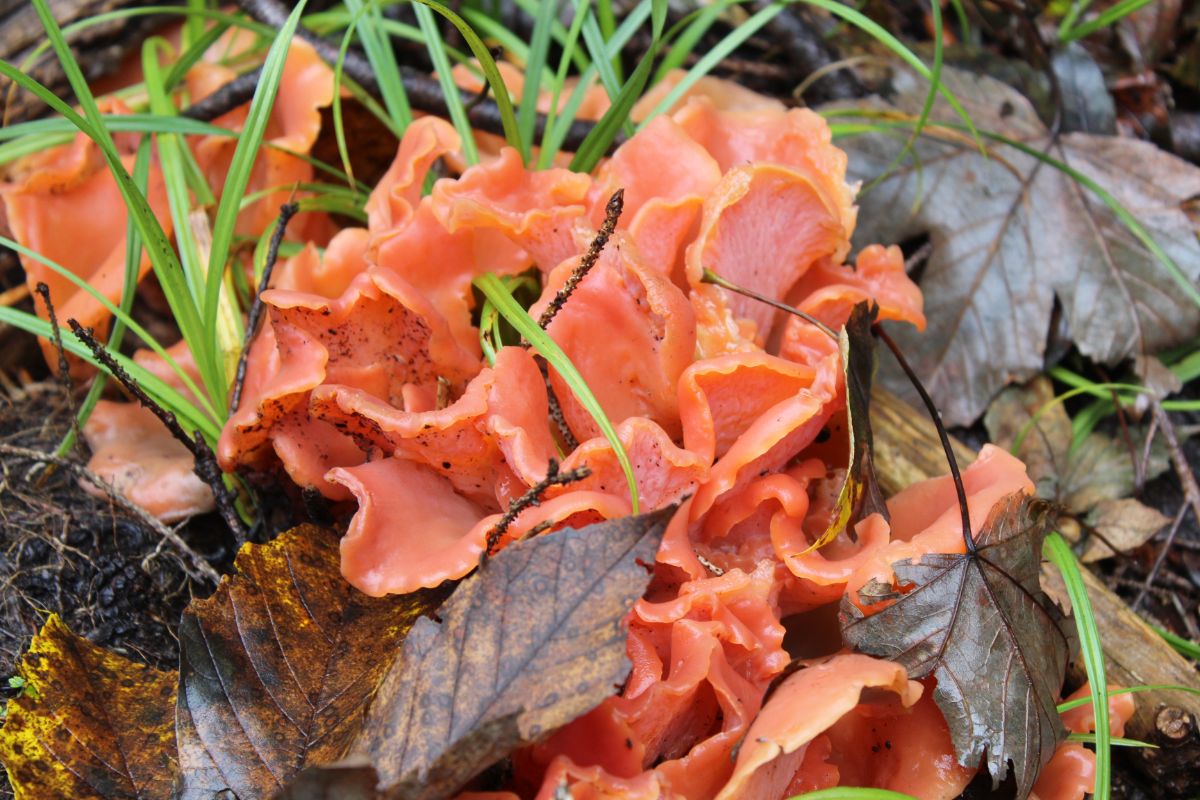
Foraging Apricot Jelly Fungus
Look for young specimens, as they’ll be less tough. Older apricot jelly fungi are usually too tough to eat, even with extended cooking times. The young apricot jelly fungus will still be upright with the caps not so spread out.
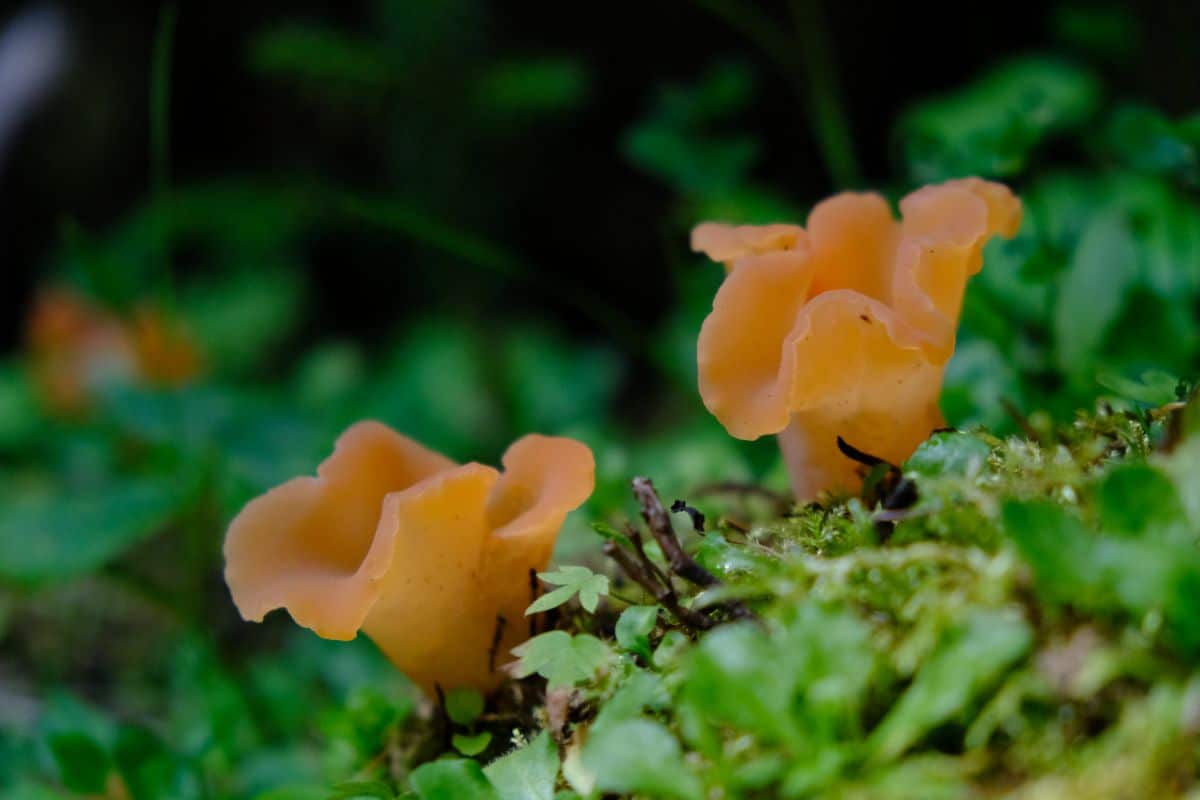
Cooking With Apricot Jelly Fungi
Apricot jelly fungus is edible raw but not that appetizing due to its rubberiness. It is best lightly cooked and used as a garnish on salads or stir-fries. You can also pickle or candy them, with very good results.
Pan Fried Apricot Jelly Fungus
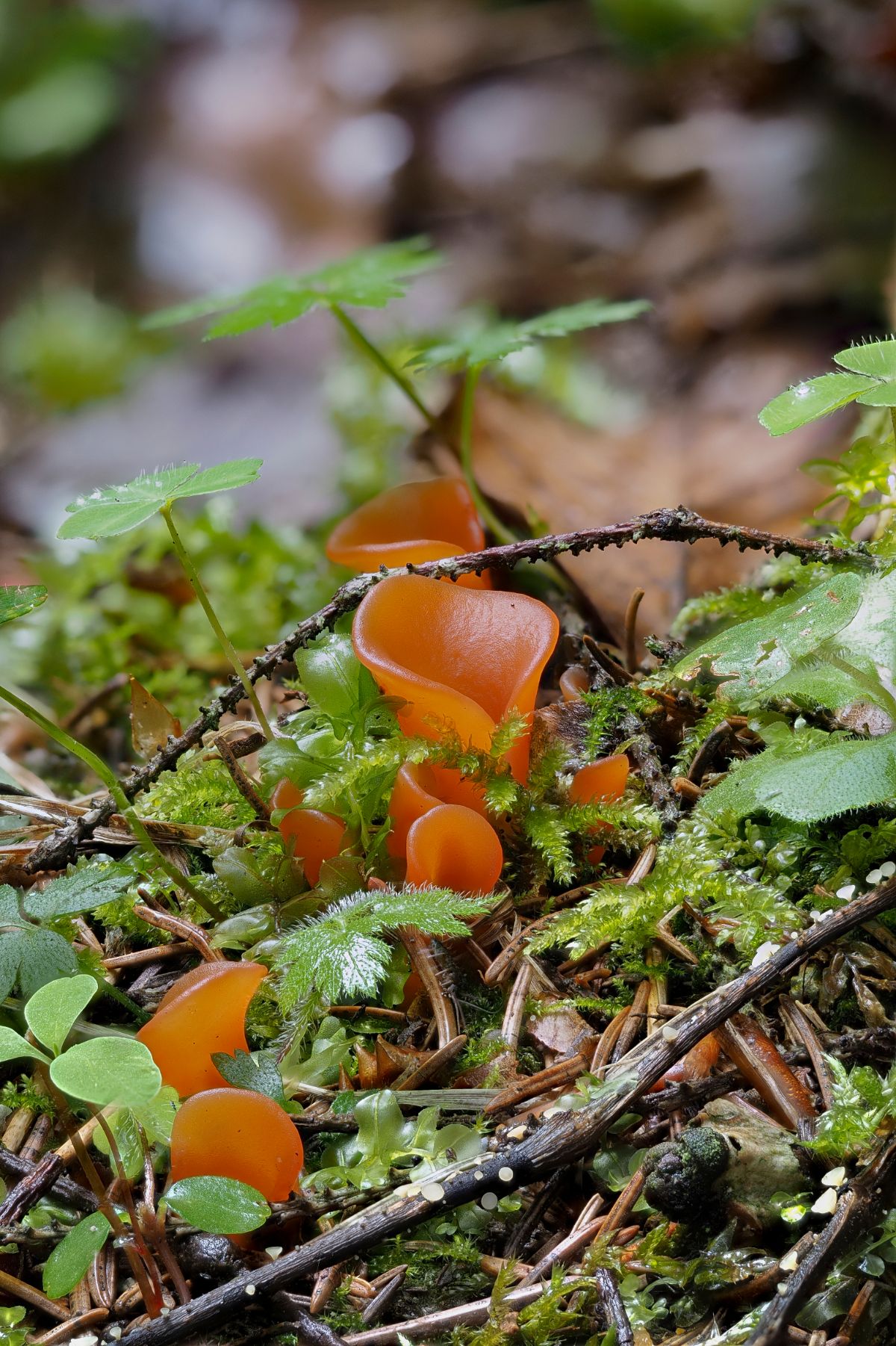
Interested in learning more edible mushroom species? Check out all our guides to edible mushrooms in North America.
Common Questions About Apricot Jelly Fungi
Is the apricot jelly fungus poisonous?
No, this is actually an edible species. Most foragers bypass it because it is small and not choice, but it’s a good species to know if you’re ever lost in the woods.









Leave a Reply